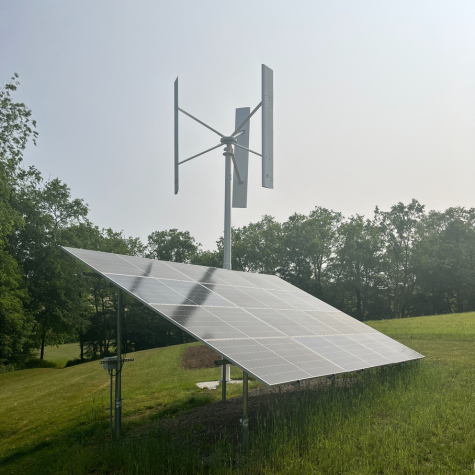Renewable Energy Systems and Net Metering
Electric Cooperatives were founded on the seven cooperative principles and Central Electric Cooperative (CEC) is no different. Those core principles include democratic control, concern for community and equality for the entirety of the membership. To adhere to these goals, cooperatives must review and adjust policies and procedures to meet the demands of an ever-changing energy landscape. These policies require a balance that focuses on the needs of the individual against the needs of the community. In other words, decisions on energy policy must take the whole membership into account. Net metering policies are no exception to this decision-making process. The cooperative grid must be equitable to all; therefore, net metering polices must be fair to all members.
Renewable Energy and Cooperatives
Pennsylvania Cooperatives have long supported renewable energy goals. Electric cooperative generation in PA is predominantly made up of carbon-free nuclear and hydroelectric resources. Beyond generation at large, cooperatives helped encourage the early integration of consumer-member-owned renewable energy systems into the cooperative grid. Early net metering programs across the state helped encourage the growth of renewable systems. However, today, programs need to reflect that growth and adjust accordingly.
Supporting the Entire Membership
For nearly 20 years, cooperatives have been purchasing excess power from members in our communities who generate their own electricity. However, this rate has gone above its fair market value. In fact, cooperatives have been paying a premium, or been paying members with renewable energy systems more for their excess solar generation than any other energy purchased by the cooperative. To break it down further, the rate that was paid to members with renewable energy systems was at a retail cost. The compensation for excess energy will be at an avoided cost rate that reflects the fair market value of the purchase to be fair in equitable to all.
While the overly generous compensation lowers costs for those with renewable systems, it begs the question, “what happens to the other members of the cooperative?” Essentially, paying more for this power is causing inequities among our membership as most members are unnecessarily bearing the burden of those higher costs. If it was allowed to go unaddressed, the burden would continue to increase – particularly on those least able to afford higher energy bills – as more renewable systems come online.
At CEC, there is a distribution cost that is paid by every member on our lines. This cost should not be subsidized by the members without renewable energy systems because there is overcompensation for excess generation. Again, the goal is to implement energy policies that balance the needs of the individual against the needs of the membership.
Generation and Transmission (G&T) Rate Changes
The board of directors of CEC’s G&T recognized these inequities and chose to make rate changes to ensure just and equitable treatment for all members. As a distribution cooperative, CEC must follow and adhere to those rates. It is important to understand and remember that CEC will continue to facilitate the purchase of energy produced by our members. To make it fair, compensation for these renewable systems should reflect the value of generation, making the membership indifferent to the source of the generation.
Making the Most of Your Renewable Energy System
Installing your own renewable energy system can still help reduce your electric bill. However, you should work with the cooperative to ensure you understand the cost involved with installing your own generation at home. Members with renewable energy systems are encouraged to use as much energy behind the meter as possible or use all the energy your system produces to offset usage as that provides the greatest advantage of your renewable energy system.
